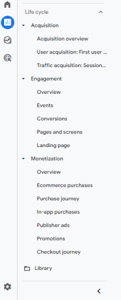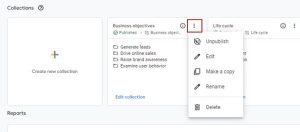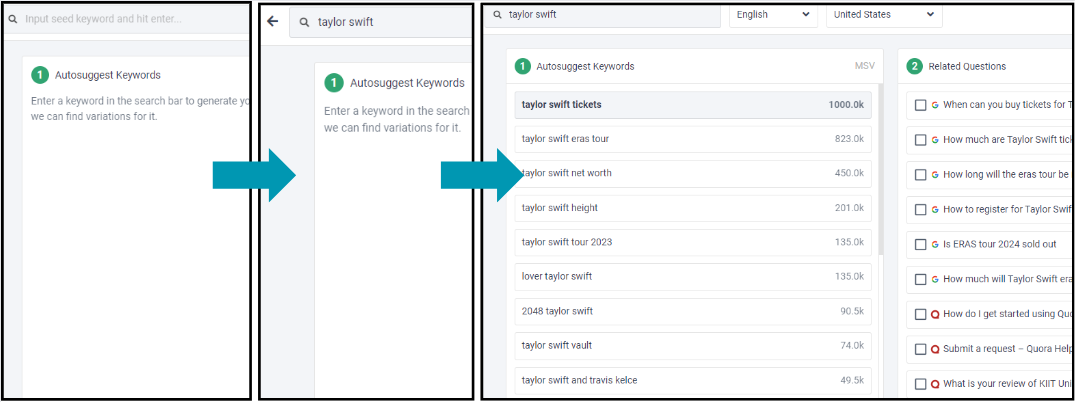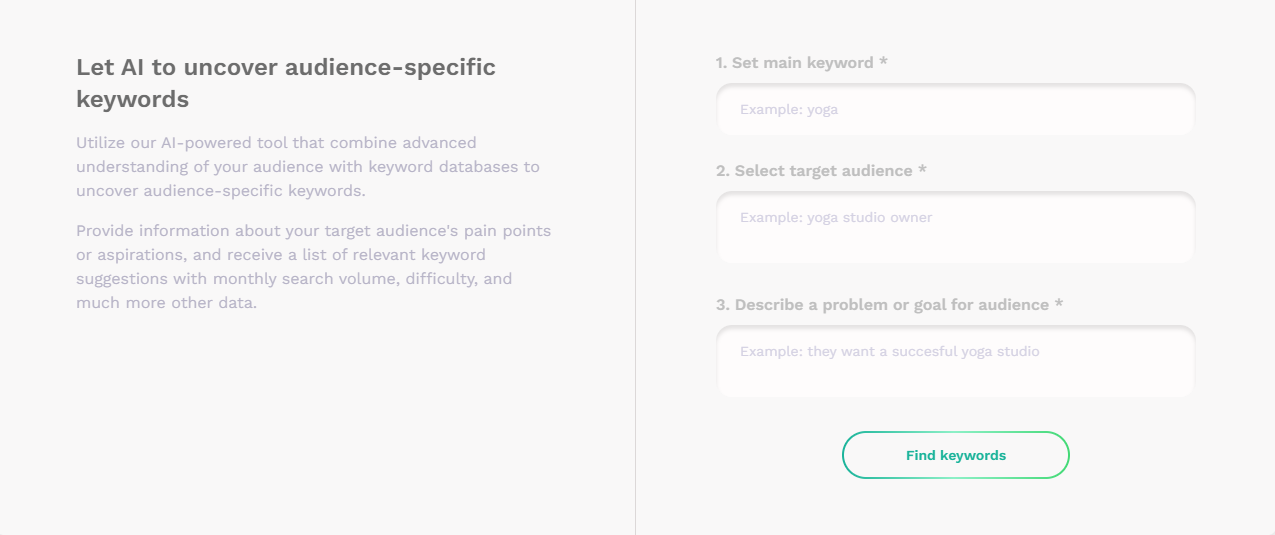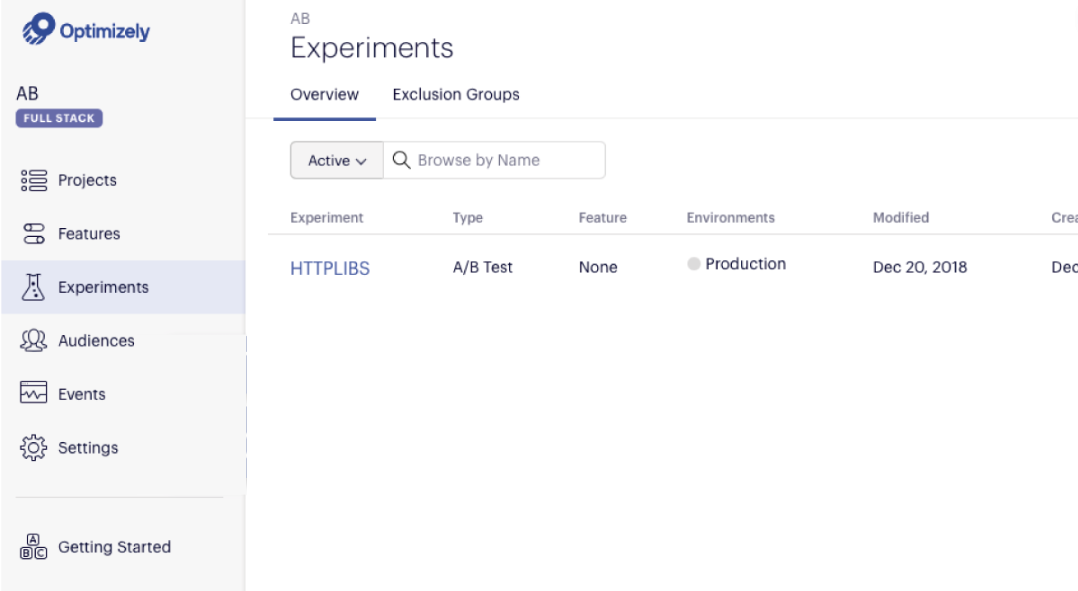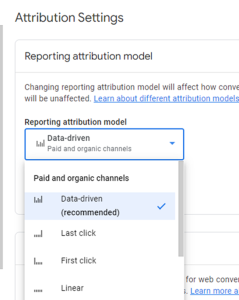A Guide to Google’s Helpful Content Updates
 You might ask yourself: “Helpful content? Who’s creating UNhelpful content?” Believe it or not, there are many websites out there designed to exploit Google’s ranking algorithms to make a quick buck.
You might ask yourself: “Helpful content? Who’s creating UNhelpful content?” Believe it or not, there are many websites out there designed to exploit Google’s ranking algorithms to make a quick buck.
Some good news: If you’re already concerned about keeping your website helpful, you probably don’t need to be concerned about these algorithm changes. Most established sites with dedicated SEO strategies are already generating helpful content.
Still, Google’s ongoing updates to its Helpful Content System can impact even the most helpful sites. This is why it’s so important to stay up-to-date on changing algorithms and search trends. As new algorithm updates roll out and Google’s ranking strategy continues to evolve, even the most established sites should remain focused on producing high-quality content.
Read more about Google’s Helpful Content Update below and learn how to use these updates to earn an organic boost for your website.
What is the Helpful Content Update?
In August 2022, Google rolled out its first algorithm update focused on promoting helpful content. The Helpful Content System, a suite of ranking factors Google uses to determine the “helpfulness” of content, was designed to improve the search landscape by:
- Elevating content that searchers find most informative, and
- Flagging for penalty any content that doesn’t offer value to searchers.
An important note: Helpful content is a site-wide signal, meaning that any unhelpful content on your site can impact your entire site’s performance.
Since that first roll out, two other iterations of the Helpful Content System have been introduced, with the most recent edition coming live in September 2023. And with so much buzz around the system to this day, it seems likely that an emphasis on helpful content will remain relevant for the long term.
What is Helpful Content?
As defined by Google, helpful content is “original, helpful content created for people.” Generally, this means that your site content answers the questions that searchers are asking in Google Search and leaves a visitor feeling satisfied after visiting your site.
Experts at Search Engine Land have identified four main factors to consider when determining whether a site’s content is helpful:
- Content is designed with a specific purpose and audience in mind.
- Content relies on (and makes prominent) expertise on the topic.
- Content is trustworthy and credible.
- Content is designed to help searchers find what they’re looking for.
Keeping these factors in mind when developing new content, or auditing existing webpages, ensures that your site benefits searchers, maintains its search rankings, and drives more organic traffic.
4 Major Factors That Make for Helpful Content
Google has made it very clear that its Helpful Content System exists to meet the needs of searchers. But without clear guidance, it can be very difficult to know exactly how to judge your site’s content quality. These four criteria can help SEOs and content creators to understand exactly what that requires.
1. Designed for a Specific Audience
Optimizing a site for SEO is often a numbers game. Content marketers are always looking for high-search volume keywords to target, while remaining in a level of competition that makes sense for their brand and allows them to rank.
However, while a robust and varied content repository is important to have, sites must still be careful to “stay in their lane.” For example, if my website is about photography, I shouldn’t be writing articles about toy cars. It’s too far from the core topic of my site, and my target audience isn’t coming to my website to learn about toy cars.
Your website should have one, clear focus. Broadening your content base in that space is fine, but moving into completely different verticals can signal that your site is more focused on ranking for more keywords than helping your audience find what they’re looking for. And at the end of the day, writing content for people is most important anyways. Building winning content strategies requires a clear focus and robust supporting articles.
This is why the popular pillar page strategy is so effective. A list of target keywords is broken into distinct topic clusters, and each topic cluster is then mapped to a unique blog article designed to rank for only those keywords. Pillar pages are those pages targeting a high-search-volume topic cluster core to the site’s purpose. This strategy allows your blog to cover more ground while staying focused on its main area of expertise.
2. Utilizes Expertise
Google has always placed an emphasis on real expertise when ranking content. In the early days, this meant the .gov and .edu sites got a leg up on many searches, as they were seen as more likely to be experts in their respective spaces.
Now, search engines look for content that refers to or quotes experts. My blog article about photography shot composure could have perfectly-optimized meta tags and content, but might still struggle to rank. Including a quote from an expert photographer, or linking out to their blog, can give my content a boost in rankings.
Additionally, first-hand expertise is incredibly valuable. If my blog article includes reviews of popular cameras, including proof that I have used each of the cameras I’m reviewing, my article will likely rank prominently. Google promotes content that relies on first-hand experience, so including any mentions of this can be incredibly powerful, especially in instances of review content.
Search engines want to see that content marketers are doing their research and getting their facts from reputable sources. Featuring this expertise in your content can therefore have large payoffs.
3. Trustworthy and Credible
Similar to the use of expertise, search engines want to feature content that searchers can trust. The same blog article published by two sources can rank differently based on the source’s reputation and established credibility.
This factor is a bit more difficult to impact than the others. Moz, creator of powerful SEO tools and an SEO thought leader, developed their Domain Authority score to measure this exact factor. A site’s Domain Authority is based on the site’s overall credibility, measured mainly by the number and quality of backlinks pointing to the site.
While Domain Authority can be difficult to quickly improve, writing articles on topics that your brand is known for can be a great way to ensure you’re getting the most out of your content. High-quality, authoritative, shareable content is more likely to attract backlinks from other domains, lending a boost to your site’s Domain Authority.
4. Helping Searchers Find What They’re Looking For
This last point may seem obvious, but it represents the core of Google’s Helpful Content System. Keeping your content focused on the altruistic purpose of the internet, helping users find information based on their search query, can be the best way to make sure your content ranks well.
So how do you do this?
Write content for people, content that gives useful information concisely. Avoid burying answers to questions in paragraphs of text, and make it clear, to search engines and people, what they can expect to find on each page. Your goal is to provide users with a satisfying experience, so consider your audience’s perspective when developing copy.
Why Should You Care About Helpful Content?
In addition to helping keep the web a productive and efficient place, keeping your website full of helpful content can have plenty of performance benefits. Helpful content is more likely to rank well for its target keywords, leading to more search traffic and more conversions.
With recent announcements and advances, many are wondering how AI will revolutionize content marketing. When deciding whether or not to use AI-generated content on your website, it’s wise to keep helpful content in mind.
While Google has made no mention of how AI content may impact helpfulness, keeping these four factors in mind when producing any new content will benefit your site. As Google has stated: “If you see AI as an essential way to help you produce content that is helpful and original, it might be useful to consider. If you see AI as an inexpensive, easy way to game search engine rankings, then no [you should not use AI to generate content].”
Want to learn more about these strategies and our comprehensive SEO services? Reach out to the team at sales@synapsesem.com.
When and How to Use Broad Match Keywords

The landscape of match types across paid search is constantly changing. More recently, Google has pushed users away from the traditional exact and phrase match types to the notoriously avoided broad match. For years, advertisers were content with utilizing phrase match and exact match terms because they were safe and often resulted in relevant queries. With the sunsetting of the broad match modifier, there is more pressure by Google to switch over your keyword match types to pure broad.
Is it time to stop ignoring those pesky messages saying your campaign is limited by search volume? Could broad match keywords actually help your campaigns improve? Well, your program’s KPIs, strategy, and budget could help dictate whether broad match is the right move. Discover when and how to use broad match keywords for your campaigns below.
When is it the Right Time to Test Broad Match Keywords?
Campaign Goals are Focused on Growth Not Efficiency:
Broad match keywords can be a great tool to generate growth in your account when there is additional budget to spend. Due to their generic nature, broad match keywords allow advertisers to “cast a wider net” into the search results by matching out to related terms. For example, if your account was focused on advertising “luxury watches,” your exact match terms would limit the search results to just “luxury” related terms. Broad match keywords could match out to “best watches,” “high end watches,” “Rolex watches,” etc.—generating more traffic to the site and the opportunity for greater conversion volume. According to a study from Search Engine Land, broad match often results in lower CPCs, even with instances of exact match terms driving $1 higher CPCs in comparison to broad match. Depending on conversion rates, broad match could be an opportunity to expand accounts and also influence traffic/sales across additional channels.
When Your Business is Easily Defined:
A pure broad match strategy relies on Google’s algorithm to properly define the true nature of your product. If your product is straight forward, like “luxury watches” it will be easily for Google to generate keywords relevant to your search. However, if your company is more restrictive like software specifically for web developers, there is a greater chance that Google could generate queries that are irrelevant to your product.
When You Need to Save Time:
A broad match strategy can result in fewer keywords, fewer expansions, and fewer optimizations which can save advertisers time in their marketing process. Because broad match terms loosely match out to various searches, you no longer have to devote time to keyword expansion. Time can even be saved on campaign builds as advertisers will likely spend less time building out tedious variations of terms like “best watches,” “high-end watches,” “expensive watches,” and more.
When you are Implementing RLSA Campaigns:
Broad match keywords can be an excellent component of RLSA campaigns where relevant audiences are already overlaid on top of search campaigns. Since we know the user is already targeted, or in some cases, has visited the site before, we can expand the keyword set to focus on less restrictive iterations of the targeted keyword set.
When your Account has Strong Conversion Volume:
The key to implementing any of Google’s bid strategies is ensuring that you have enough data for the system to work efficiently. Broad match works best in accounts that generate strong daily conversion volume. Since we recommend combining broad match with bid strategies, the system will begin to “learn” which iterations work best in generating conversion volume or revenue. Google recommends having at least 15 conversions per week for a successful smart bidding strategy.
How to Use Broad Match Keywords:
Broad match can make or break your search campaigns so it is important to understand the best methods of implementation before we open the gates to a pure broad match keyword strategy.
Negatives, Negatives, Negatives:
Quite possibly the most important element to incorporating broad match keywords into your Google Ads strategy is to not only keep an extremely close eye on the search query results but to also proactively and regularly add negative keywords to avoid any irrelevant traffic. We recommend keeping a daily eye on the search query results, particularly over the first 7 days of a new program utilizing broad match.
Smart Bidding:
Through testing and overall Google recommendations, the best way to apply broad match terms to any campaign is utilizing a smart bidding strategy. Broad match terms generate more data through clicks and conversions for Google which allows the automated bid strategy to have greater learning to make decisions. If conversion tracking is properly set up, the bid strategy will, over time, stop showing your ads for less relevant searches as it acquires better data. In general tests, we have found that broad match works best when combined with exact match terms and can even result in exact match CPCs and conversion rates improving.
Analyze Backend Data (for lead generation companies):
Maximizing conversions is great, but if it is not driving deeper funnel leads, it will not be a profitable strategy. It is important to always evaluate backend data when running any test, but especially with broad match terms that are likely to drive in more generic traffic. If possible, we recommend importing in any offline conversion data to feed into the system so that Google’s bid strategies can optimize off quality leads and conversions.
Set Restrictions with Target CPA or Target ROAS Goals:
A good strategy for adding broad match keywords to your account in a conservative manner is to launch with target CPA or ROAS goals. Google’s learning algorithms will begin to identify what is most efficient for your account in order to avoid overspending with these new terms.
If you have any questions regarding automation best practices, please contact us by email at sales@synapsesem.com to talk through your Google Ads optimization needs.
Guide to the GA4 BigQuery Export
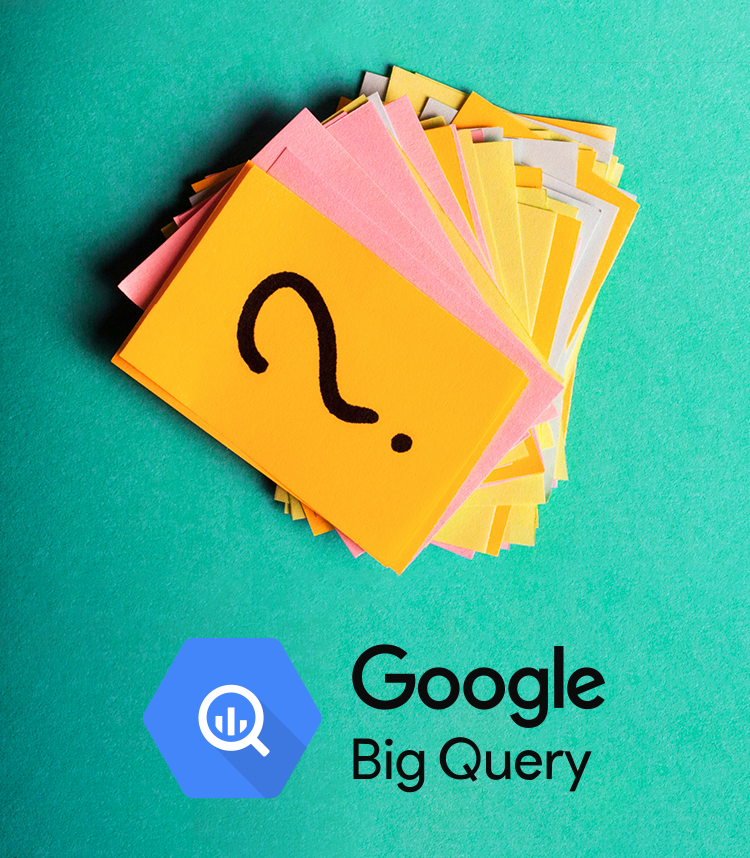 The switch from Universal Analytics to Google Analytics 4 (GA4) has come with both benefits and challenges for marketers. One of the most exciting benefits on the data analysis and warehousing front is the free (no 360 required!) BigQuery link.
The switch from Universal Analytics to Google Analytics 4 (GA4) has come with both benefits and challenges for marketers. One of the most exciting benefits on the data analysis and warehousing front is the free (no 360 required!) BigQuery link.
This link allows you to seamlessly export your GA4 data into Google BigQuery—a powerful, fully managed, and serverless data warehouse in the Google Cloud Platform. By combining the capabilities of GA4 with the analytical prowess of BigQuery, you can unlock a wealth of possibilities for extracting valuable information from your data.
In this guide, we’ll explain how to leverage the BigQuery GA4 Export to its fullest potential. You’ll explore its advantages and discover how to set up the export, understand its data schema, and harness the power of BigQuery SQL queries to derive meaningful insights from your GA4 data.
Why Should I Export GA4 Data to BigQuery?
In the world of digital analytics, collecting data is just the first step in the journey toward meaningful insights. The true power lies in your ability to extract valuable information, identify trends, and make informed decisions. GA4 is a powerful tool in its own right, but to supercharge your data analysis, you should consider exporting your GA4 data to Google BigQuery for the following reasons:
- Integrate GA4 data with other sources: To gain a comprehensive view of your business performance, it’s best to combine your GA4 data with other sources. BigQuery offers seamless integration with various data connectors, making it possible to merge your GA4 data with advertising data from Google Ads, your CRM, or even external datasets. With all your data integrated, you can build customized audience segments, explore traffic attribution, and build simple machine learning models.
- Accelerated Data Visualization: For those dealing with sluggish GA4 data load times in BI and data visualization tools like Google Data Studio, Google BigQuery is a game-changer. The BigQuery BI Engine smartly caches frequently used data, drastically speeding up SQL queries and boosting the efficiency of data visualization and Business Intelligence tools. This translates to faster insights, smoother interactions, and an overall more responsive experience.
- Automate repetitive tasks: One of the biggest efficiency-boosters of using BigQuery is the ability to automate repetitive analyses and data pulls. By setting up automated queries and reports, you can eliminate the need for manual data extraction and analysis, saving valuable time and resources.
- Advanced analysis: BigQuery is a powerful tool that supports advanced analytics and machine learning applications, enabling you to delve deeper into your data. You can perform complex analyses, conduct predictive modeling, and identify trends that might have remained hidden.
- Avoid sampling and thresholding: The BigQuery export contains raw data from GA4. This allows you to bypass data limitations you may see in the GA4 platform, such as sampling, cardinality, and thresholding.
To fully reap the benefits of the GA4 BigQuery export, it’s essential to set up the link as soon as possible. The export isn’t retroactive, meaning the sooner you create your link, the sooner you start accumulating valuable historical data.
How to Link GA4 and BigQuery
The first step to exporting your GA4 data to BigQuery is setting up a Google Cloud account. Google Cloud offers a free tier that includes 10 GB of data storage and up to 1 TB of querying each month. For most small to medium-sized businesses, this free tier provides more than enough resources to get started with a GA4 export to BigQuery.
Once you have your Google Cloud account set up, make sure that your Google account has “Owner” permissions in Google Cloud and at least “Editor” permissions in GA4. After you complete these initial steps, you can move forward with enabling the BigQuery link from the Google Analytics admin tab:
- Navigate to BigQuery Links under the Product Links menu in your property settings.
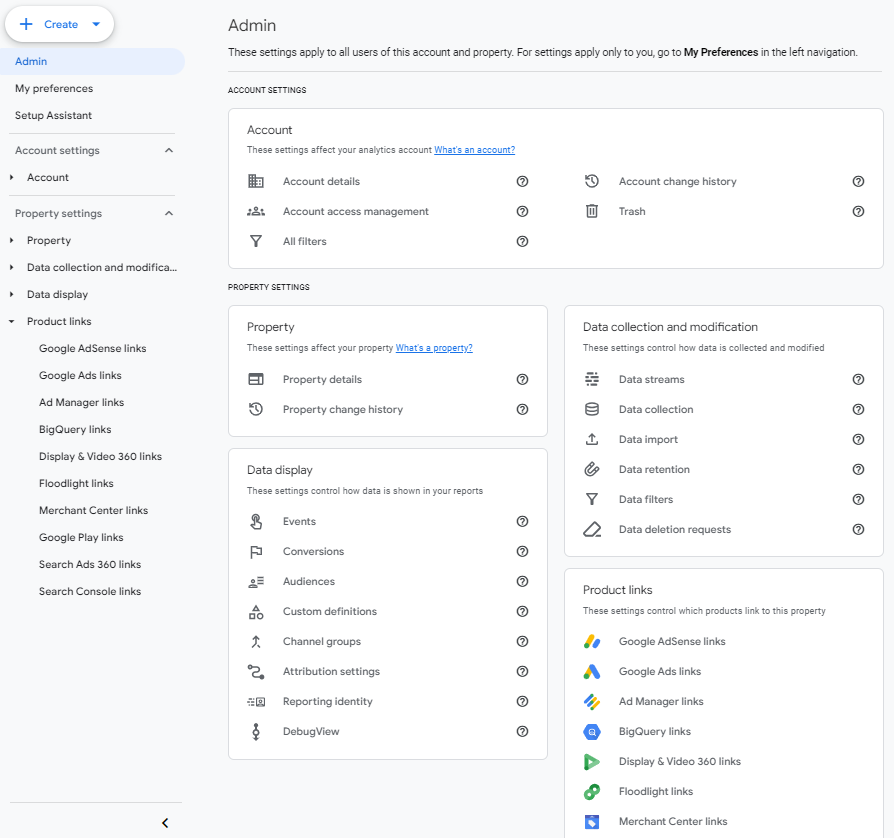
- Click Link to create a new connection.
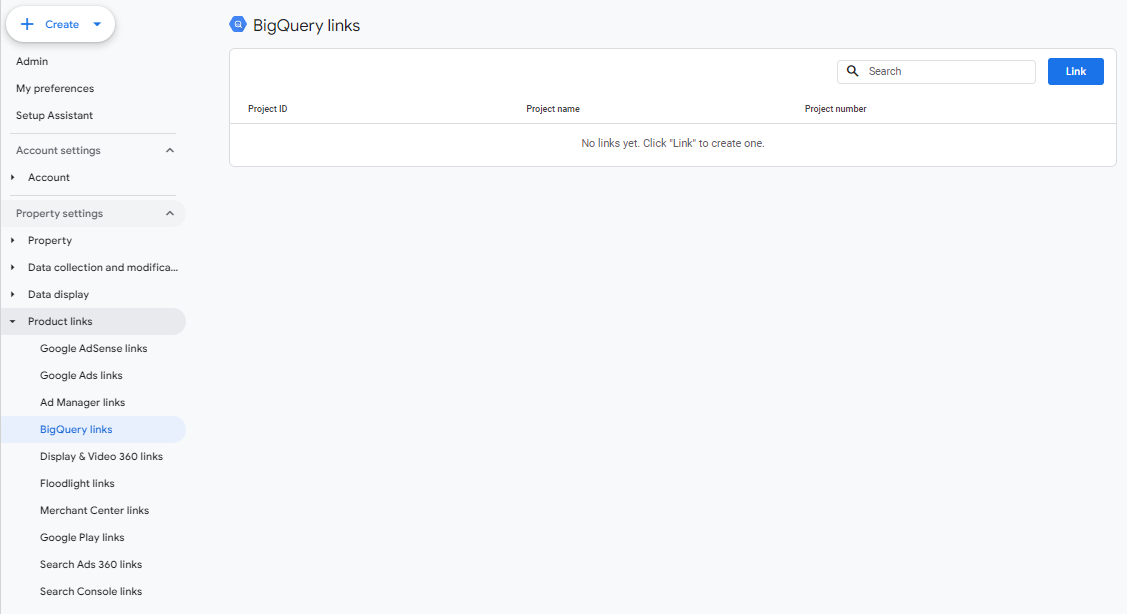
- Click Choose a BigQuery project to see the list of projects you have access to. Select the project you want the export to be housed in and click Confirm.
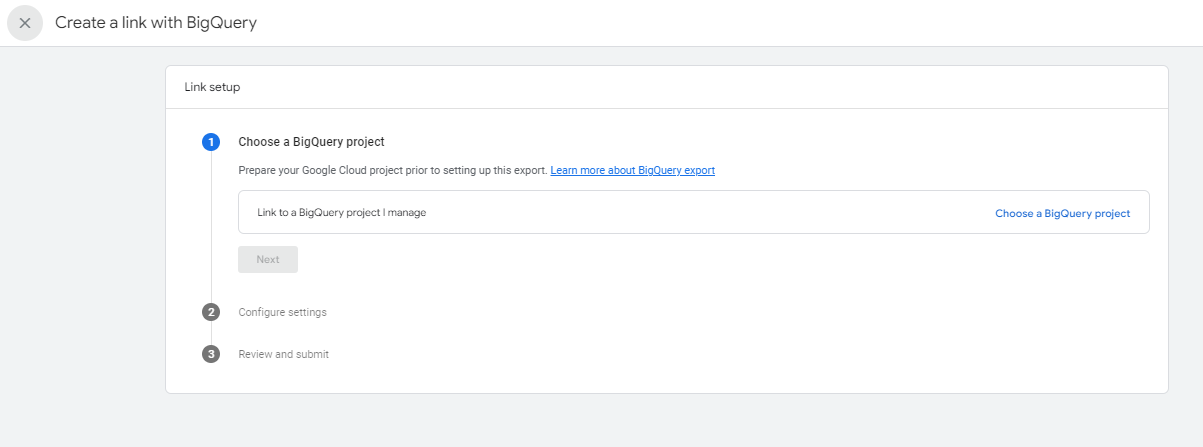
- Select a location for the data and click Next.
- Configure your settings. You can choose which data streams to include with the export and specific events to exclude from the export under Configure data streams and events.
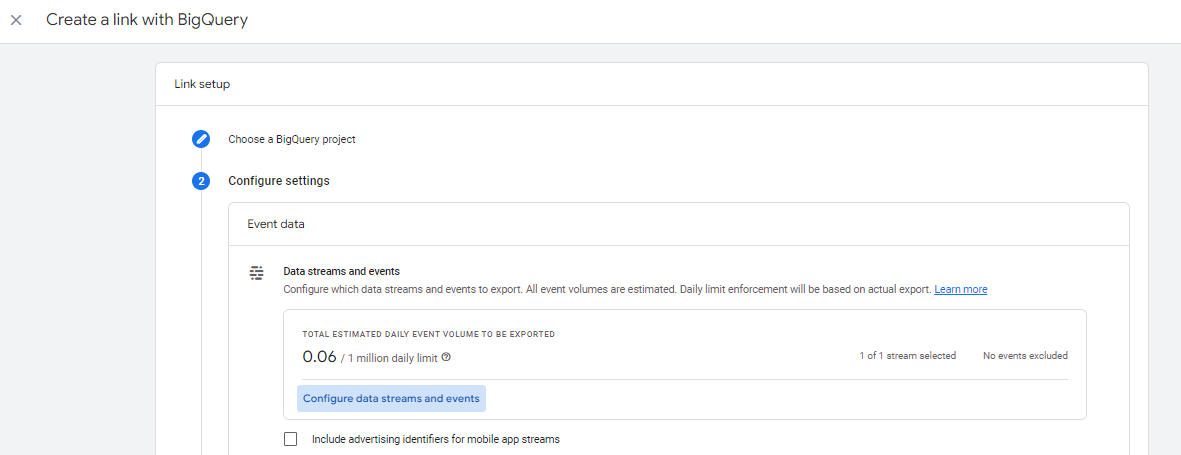
- Choose the types of tables you want to export. The Event data export is event-scoped, whereas in the User data export, each row represents a unique user. You can also choose the frequency of your Event data export: “Daily” for once a day and optional “Streaming” where the current day’s data will be stored and can be accessed immediately.
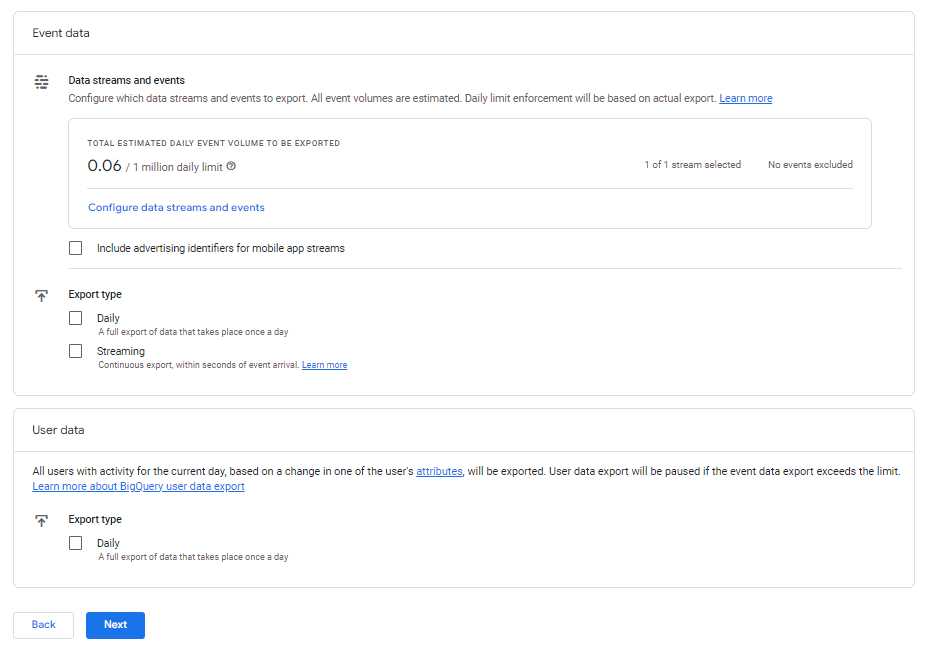
- Review your settings, then click Submit to finish setting up your link.
Once the link is created, it can take up to 24 hours for your data to appear in BigQuery. For daily exports, a new table will be exported each day that contains the previous day’s data.
Understanding the Data Schema
Now that you’ve set up your link, the next step to unlocking the benefits of the GA4 BigQuery export is understanding the structure of the data.
Tables
For Event data exports, a table named events_YYYYMMDD is created each day if you have enabled the Daily export option. If you’ve also chosen to export streaming data, you’ll see another table named events_intraday_YYYYMMDD, which is continuously populated as events are recorded throughout the day.
The User data export will create up to two new tables. The table named pseudonymous_users_YYYYMMDD contains rows for every pseudo user ID, excluding users who have not consented to cookies. If you’ve set up user ID collection for your website and are sending that data to GA4, you will also see users_YYYYMMDD tables, which include data for unconsented users. For both User data table types, rows are updated when there is a change to one of the fields.
Data Schema
The columns in each table type represent the parameters that are available for querying. Google has provided detailed explanations of each parameter for both the event data export and the user data export in their documentation.
How to Query and Analyze Your BigQuery GA4 Data
Now that you’ve set up your link and gained an understanding of data schema, it’s time to put your data to work. SQL is the language used to interact with the tables in your BigQuery dataset, and it offers a standardized way to communicate with your data. Here’s how to access the built-in query editor in BigQuery:
- Login to Google Cloud Console: Go to the Google Cloud Console and sign in with your Google account.
- Access BigQuery: In the Cloud Console, click on the navigation menu (☰) in the top-left corner and select “BigQuery.”
- Select Your Project: Ensure you have the correct Google Cloud project selected in the project dropdown at the top of the BigQuery Console.
- Write SQL Queries:
- Click on your dataset on the left-hand panel, where you have your GA4 data stored. Select the table you want to query.
- Click the “Query” button. This opens a pane where you can write and execute SQL queries.
If you’re just getting started with SQL, there are many free resources online to help you learn the language, such as Codeacademy and Datacamp. A great resource for generating GA4 BigQuery queries specifically, without writing any SQL of your own, is GA4 SQL. This tool allows you to select the metrics, dimensions, and filters you want to apply to the raw data export and paste them as-is into the query editor. Google has also provided some basic and advanced queries in their Query Cookbook for Google Analytics to help you get started analyzing your data.
As you become more comfortable with SQL, you can modify and create custom queries tailored to your specific business needs. SQL is a versatile tool that empowers you to interact with your data and uncover valuable information, whether you’re a beginner or an experienced user.
If you’re eager to harness the benefits of exporting your GA4 data to BigQuery, you can also reach out to Synapse SEM for help. Our team of experts can handle everything, from setting up the export to creating comprehensive reports and analyses that provide actionable insights. Contact us by email at sales@synapsesem.com or by phone at 781-591-0752 to get started.
UA VS. GA4: A GA4 Guide for Beginners
 Are you used to Universal Analytics and dreading learning the new GA4 interface? If you’re unsure of how to jump into the new platform, where to find reports, or how to analyze your site data, you’ve come to the right place. Read on to get an overview of the new analytics platform, including metric definitions, customizing your property, and how to analyze GA4 data vs. Universal Analytics data.
Are you used to Universal Analytics and dreading learning the new GA4 interface? If you’re unsure of how to jump into the new platform, where to find reports, or how to analyze your site data, you’ve come to the right place. Read on to get an overview of the new analytics platform, including metric definitions, customizing your property, and how to analyze GA4 data vs. Universal Analytics data.
Default Property Setup
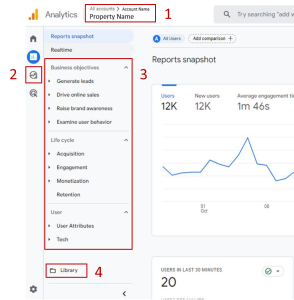
- Account and Property Name
- Explore reports
- Default Reports within the “reports” menu option
- Library used to customize collections and reports
Important Metric Definitions in GA4
Several metrics we are used to analyzing in Universal Analytics have new definitions within GA4 and are calculated differently. For this reason, if you are comparing UA numbers vs. GA4, you will notice discrepancies in your data. Below is an overview of some common metrics and their GA4 definitions.
| GA4 Metric | Definition | Comparison to Universal Analytics |
| Total Users | Total number of users. | Compares to the “users” metric in UA. |
| Active Users | Any user with an engaged session. The primary user metric of GA4. | n/a |
| New Users | Users who interacted with your site or app for the first time. | New users to the site in UA. |
| Conversions | Events that have been marked as a conversion. | A “goal” in UA. |
| Views | All pageviews plus screen views for an application. If you don’t have an app, it is just counting pageviews. | Pageviews in UA. |
| Views per user | The number of pageviews and screen views per user. | The replacement metric of “pages per session.” |
| Engaged Session | A session that lasts longer than 10 seconds, has a conversion event, or has at least 2 views (pageviews or screen views). | n/a |
| Engagement Rate | The percentage of sessions which were not engaged. | n/a |
| Bounce | A session that is not engaged | Bounce existed in UA but was calculated differently and therefore cannot directly be compared to GA4. |
| Bounce Rate | The inverse of engagement rate. The percentage of sessions that were not engaged. | Bounce rate existed in UA but was calculated differently and therefore cannot directly be compared to GA4. |
Common Analyses & Default Reports in GA4
One fault of Universal Analytics was that there were so many default reports, it was sometimes hard to find the one you were looking for. Within GA4, there are fewer defaults, but many of the high impact analyses still exist (and if they don’t, you can add them! See the next bullet).
The image to the left outlines the collection which houses several popular analyses. You’ll notice each topic has an overview under it. These overviews contain cards that act as a summary of each report within the topic (topics are the headlines such as Acquisition, Engagement, and Monetization).
1. Acquisition
User acquisition and traffic acquisition are the two default reports here with very similar setups. The core difference between these reports is user acquisition uses user data as the primary and secondary dimensions, whereas traffic acquisition uses session data (i.e., session default channel group).
2. Engagement
The engagement topic houses reports by event names, conversions, pageviews, and landing pages. The landing page report is commonly used.
3. Monetization
Monetization houses everything ecommerce-related, from performance by item (ecommerce purchases) to promotions (promos set up via Merchant Center).
Customizing Your GA4 Property
You may have noticed that there are fewer default reports within GA4 versus Universal Analytics. Instead, Google has given users the ability to customize their property to fit the needs of their organization. There are three, main types of customizations that can be made:
1. Add/delete reports within a collection:
- In the library (#4 above), you can add or delete collections (groups of reports) or individual reports by clicking the three dots. If you add a new collection, be sure that you click the three dots again and click “publish,” otherwise it will remain unpublished and just visible within the library settings.
- NOTE that customizations within the library or default reports are visible for all users who have access to the property. Consult the rest of your organization prior to making large edits.
2. Update the default dimensions and metrics within individual reports:
- Updates to default metrics and dimensions can either be made within the library (find the specific report name and click the three dots on the right-hand side to edit the report), or on the specific report by clicking the “customize” pen icon. From there, use the right-hand rail to modify the report data.
3. Create Explore reports:
- Explore reports are the new version of custom reports from Universal Analytics, #2 above. These reports are only visible for the user created them, unless shared. These reports are recommended for common analyses and data pulls.
This should be enough to get you a jump start into GA4! If you need additional assistance or would like help with your own property, please contact us by email at sales@synapsesem.com.
Content Marketing in the Age of AI: 5 Tips for SEO Specialists
In today’s digital landscape, content marketing is a critical component of any successful company strategy. According to the Content Marketing Institute, 73% of B2B marketers and 70% of B2C marketers use content marketing as part of their overall marketing strategy. However, to stand out in the vast sea of content, businesses and SEO specialists are turning to newly available artificial intelligence (AI) solutions to gain a competitive edge. They are using AI technology to streamline content creation, optimization, and distribution, making it more targeted and effective. In this article, we’ll explore five ways SEO specialists and marketing managers can leverage these innovative tools in the age of AI content marketing.
1. Leverage AI-Driven Keyword Research
AI tools, such as Frase.io, have the ability to identify high-impact keywords, taking into account relevance and competitiveness. By analyzing vast amounts of data and helping to identify the most relevant and high-traffic keywords in a fraction of the time it would take manually, artificial intelligence provides businesses with a competitive SEO edge. These tools can also provide valuable insights into user search patterns, helping companies understand their target audience’s preferences.
2. Optimize Content with AI-Generated Insights
AI can provide valuable insights on content optimization, such as recommended word count, readability, and much more. These insights can significantly enhance your on-page SEO. With the help of the insights gathered from AI SEO tools, digital marketing agencies can then use the data to fine-tune content to align with these insights, ensuring all content is optimized for search engines and user engagement.
3. Enhance Content Personalization with AI
Content personalization is crucial in today’s world of organic search, and AI content marketing tools have significantly enhanced the ability of SEO specialists, marketing managers, and writers to create tailored content. AI-driven content optimization solutions, such as SEO.ai, can provide relevant keyword and phrase recommendations that aid in making the content more appealing to a certain audience, leading to improved search engine rankings and visibility. For example, you can submit a drafted piece of writing to certain AI tools, and in return they will provide content tweaks and recommendations on how to further personalize and improve the initial draft. Additionally, these tools can also be used to recommend which types of content will resonate best with certain audiences and subjects.
4. AI for Monitoring and Adaptation
In the fast-paced digital world, continuous monitoring and adaptation are essential. AI can continuously monitor SEO trends and adapt your content strategy in real-time. This ensures your content remains relevant and engaging. Coupled with the power of AI, marketing agencies offer the agility and responsiveness needed in the AI-driven landscape to keep your content fresh and competitive.
5. A/B Testing and AI
A/B testing is a powerful tool to refine your content marketing strategy. These assessments can be used to evaluate rankings, traffic, time on page, conversions and overall engagement, which can help determine what makes Google and your target audience happiest. With AI tools such as Optimizely or RankScience, you can run A/B tests that are data-driven and help you make decisions based on performance insights.
Can SEO Content Be Written With AI?
In short, the answer is no. While AI content marketing tools can be incredibly helpful SEO assistants in conducting keyword research, generating topics, optimizing content, and evaluating performance, nothing can replace human writing (and no, you can’t fool Google either). Below are examples of human writing vs. AI-generated responses when asking the question “What are featured snippets?” Note how one answer is considerably more informative and flows better than the other.
Human Writing:
Featured Snippets are Google’s way of giving us fast answers to common questions, right in the search results. Often in the form of definitions, how-to instructions, and other answers/solutions, Featured Snippets are separate blocks of content that appear above the organic listings on the first search results page.
Featured Snippets present users with answers without having to navigate to a website. Extracted from a given web page, they contain a summary of an answer, a page title and URL, and a link to the corresponding source.
ChatGPT:
Featured snippets, also known as position zero or answer boxes, are a type of search result that is prominently displayed at the top of the search engine results page (SERP) when you perform a search on platforms like Google. These snippets are designed to provide users with a quick, concise, and direct answer to their query without the need to click on any of the search results. Featured snippets typically appear in a box just above the organic search results and are often accompanied by a brief excerpt from a web page that is considered a reliable source for the information.
The Power of AI-Driven Data Analysis for SEO and Content Marketing
The Influencer Marketing Hub reports that 61.4% of marketers have used AI in their 2023 marketing activities, and 44.4% have used AI for content production. One of the most significant benefits of AI in content marketing is its ability to process vast amounts of data and provide valuable insights. For digital marketing specialists and managers across a variety of industries, this means being able to identify trends, understand user behavior, and discover the most relevant keywords for optimization. However, managing this wealth of data without the right tools and expertise can be overwhelming.
Benefits of Working with a Performance Marketing Agency
While AI offers incredible capabilities in content marketing and SEO, it can also be complex and time-consuming to implement effectively. This is where working with a digital marketing agency can be a game-changer. Agencies provide a cost-effective and efficient solution for leveraging AI in your content marketing efforts. Some of the key benefits of collaborating with a performance marketing agency such as Synapse SEM include:
Access to Cutting-Edge AI Tools: Agencies often have access to advanced AI tools that may be too complex for individual businesses to implement. This technology can give your content marketing a competitive edge.
Expertise and Experience: Digital marketing agencies employ professionals who specialize in content marketing and SEO. They understand the intricacies of AI tools and can use them effectively to benefit your business.
Ongoing Support: Marketing agencies offer ongoing support and maintenance. As the AI landscape evolves, they can adapt your content marketing strategies (as well as the latest technology trends) to ensure you stay ahead of the competition.
AI is transforming the field of content marketing and SEO, offering powerful tools and insights to SEO specialists. However, it’s important to remember that no tool can replace the value of human-touch, and to use the proper solutions for certain needs. Embrace the power of AI and consider partnering with a performance marketing agency to unlock your business’ full potential. Your content marketing strategy will thank you for it.
Ramp Up Your SEO Strategy
Ready to supercharge your content marketing with AI SEO tools and expert guidance? Contact us today to explore how AI-driven content marketing and SEO can transform your online presence.
What You Need to Know About the Data-Driven Attribution Model In GA4
First click, linear, time decay, and position-based attribution models are going away across Google Ads and Google Analytics
- Starting in May 2023, Google will remove the ability to select first click, linear, time decay, and position-based attribution models for conversion actions in Google Ads that do not already use one of these models.
- Starting in September 2023, these four rule-based attribution models will be removed from Google Ads and Google Analytics.
What happens to conversion actions if these attribution models are removed?
Once these four attribution models are removed in September 2023, they will also be removed from the reporting throughout the rest of Google Analytics, including the Overview page and the Model comparison report within the Attribution tab.
Any conversion actions still using these models will be switching automatically to data-driven attribution, the default attribution model moving forward. If you want to continue using the last-click attribution model, you have the option to manually switch to the last-click model. To do that, you would need to access the Attribution section in GA4, which can be found in the Admin tab.
What is the Data-Driven Attribution model?
Data-driven attribution takes into account the actual data collected on customer interactions and behaviors to determine the impact of each touchpoint on the conversion or desired outcome. It utilizes statistical models and machine learning to analyze large sets of data and identify the relative contribution of each touchpoint.
Attribution Reportings in GA4
There are two main reports in GA4, the model comparison tool and the conversion paths report, which can be found in the attribution reports sections.
With the model comparison tool, users can analyze how conversion credit shifts under different attribution models and assess how these models impact the evaluation of different marketing channels. The tool presents data in a table format for conversions and revenue, offering a clear view of these metrics across different channels and different attribution models. For instance, one can compare data from the Last-Click Model with that of the Data-Driven Attribution Model. The model comparison report can help users understand how different models attribute conversions to various touchpoints, before altering the attribution settings in GA4.
The conversion paths report, similar to the funnel report in Universal Analytics, provides the option to switch between various attribution models. This report offers valuable insights into the channels within a multi-channel conversion path, allowing for a deeper understanding of customer journeys.
Potential Concerns Regarding the Attribution Model Update in GA4
The key advantage of data-driven attribution is its ability to provide a more accurate and granular understanding of the customer journey. By considering multiple touchpoints and their interactions, it can reveal the true influence and value of each touchpoint in driving conversions or desired outcomes.
In the meantime, we believe that removing the four attribution models and defaulting to the GA4 data-driven model may lead to an increase in reporting complexity. Rule-based attribution models provide clear and straightforward insights into the contribution of specific touchpoints. They offer a simplified view that makes it easier to understand and communicate with stakeholders. On the other hand, data-driven attribution models can be more complex and make it challenging to pinpoint the channel that is truly driving conversions. Furthermore, since these models necessitate advanced statistical analysis, they may require a substantial amount of data to deliver the most accurate results.
Other Challenges
The removal of these attribution models may pose challenges in comparing future data with past performance, as the change in the attribution model could introduce discrepancies. The discrepancy in data resulting from the change in the attribution model could hinder the ability to make “apple-to-apple” comparisons and evaluate the effectiveness of marketing efforts over time.
As new features, such as the attribution models and reports, emerged with the new GA4 platform, it is strongly recommended to set up your GA4 prior to the deadline and familiarize yourself with the platform. If you require any assistance in migrating to GA4, please feel free to reach out to us using this form.
How Much Automation is TOO Much in Google Ads?
 It is no secret that the entire world is moving towards a more automated way of life. There are now cars that can parallel park themselves, grocery stores with no cashiers, and apps that can use AI to make Elvis sing Taylor Swift songs. The same shift is happening across the digital marketing world with Google becoming more aggressive in pushing their automated recommendations across their advertising platform. While some strategies, like smart bidding can save an advertiser time, others can create an even larger headache leading to unexplained increases in spend, irrelevant asset creation, and unqualified lead generation.
It is no secret that the entire world is moving towards a more automated way of life. There are now cars that can parallel park themselves, grocery stores with no cashiers, and apps that can use AI to make Elvis sing Taylor Swift songs. The same shift is happening across the digital marketing world with Google becoming more aggressive in pushing their automated recommendations across their advertising platform. While some strategies, like smart bidding can save an advertiser time, others can create an even larger headache leading to unexplained increases in spend, irrelevant asset creation, and unqualified lead generation.
Auto Applied Recommendations:
Google provides an array of standard recommendations that will be automatically applied to your account if you do not opt out of settings. These settings can drastically impact your account performance, account spend, and efficiency. Below includes several settings that we recommend opting out of.
Add Broad Match Keywords:
Perhaps one of Google’s biggest pushes of 2023 is implementing broad match keywords. This will allow keywords to match out to more variations, leading to higher traffic volume and growth. However, the drawback is that many of the queries will likely be irrelevant to your business and they could dominate the budget. For example, if you are running on the keyword “luxury watches” in broad match, you can likely match out to all kinds of jewelry related iterations even “wedding rings.” It is important when launching new accounts or optimizing existing accounts to be weary of Google’s push for broad match and to ensure you have unselected this setting in the recommendations tab before testing. If you do consider testing broad match, we recommend considering the following before implementing an A/B test.
- Ensure that you have the budget available to test this expansion.
- Expansive negatives to account for broader queries coming through.
- We also recommend keeping a close eye on search term performance daily.
- Broad match campaign should use automated bidding to work best.
- CPA should be efficient to begin with as conversion rates will likely be lower.
Add Responsive Search Ads:
While it is a no brainer that everyone should be fully using Responsive Search Ads, we want to avoid Google creating and launching their own ads based on your performance. Not only will this cause issues with unapproved content running, but it also can generate lower quality recommendations. In the past, Google’s headline and description recommendations have included assets with no CTAs, irrelevant content, and very low character counts. We recommend testing and creating all iterations of ad assets without opting into Google’s auto recommendations. With standard RSAs we recommend pinning at least 3 keyword-specific, similar headlines to position 1, so that Google can still use its algorithms to showcase the ad most likely to generate the highest click-through-rate while ensuring your headline is highly relevant to the search term.
Use Display Expansion:
If you are consistently not meeting your search budget, Google might automatically opt your search campaigns into the display network. This means that Google will create ads based on your search ads to run on placements within the display network. Text ads, lacking imagery, across display often result in spam traffic and unqualified lead volume because the targeting is far broader than search. Therefore, to utilize unused budget across the display network, we recommend creating separate display campaigns, with their own responsive display ads. Also, we recommend applying additional layers of targeting onto the campaigns in terms of audiences, custom segments, and placement targeting.
Optimized Targeting in Display:
Optimized targeting is automatically applied to all display, discovery, and video campaigns. Optimized targeting allows Google to expand your audience beyond your targeted reach. The goal of this setting is to broaden your campaign’s reach to similar users based on your targeting settings. However, this setting can have some negative consequences. For example, if you were running a retargeting campaign across display but were opted into optimized targeting, Google would also show ads to users they deem “similar” but have not previously visited your site before. We have seen these audiences eat up the entirety of budgets in display campaigns with minimal conversion volume. When starting out in display, we highly recommend opting out of this setting if able to generate decent traffic volume.
Google’s best practices are not necessarily the best practice designed for your account’s specific goals. This can be the case when it comes to automation. Our ultimate take on automation is that some strategies can be beneficial like automated bidding, however we strongly recommend opting out of the above auto applied recommendations that will mostly lead to increased spend and poor efficiency. It is important to know your account goals and what options make sense for you. Google is constantly changing their platform and the auto apply settings. We recommended reviewing the settings on a monthly cadence and opting out of any option that does not make sense for your business goals. If you have any questions regarding automation best practices, please contact us by email at sales@synapsesem.com to talk through your Google Ads optimizing needs.
The Evolution of Google Ads Match Types

In the realm of online advertising, Google Ads has long been a cornerstone for businesses seeking to connect with their target audience through Pay-Per-Click (PPC) campaigns. Over time, Google has continually refined its advertising platform, including the evolution of match types. While match types initially provided advertisers with greater control and precision, there has been a noticeable shift towards automation, leading to concerns over diminishing advertiser control. In this article, we will explore the journey of Google Ads match types, examine the impact on advertisers, discuss the challenges they face, and review the opportunity this has created for advertisers to grow.
1. Broad, Phrase, and Exact Match
The introduction of broad match marked the beginning of a journey for Google Ads advertisers. Advertisers were excited about the prospect of reaching a wider audience and gaining visibility. However, as broad match keywords cast a wide net, advertisers soon realized that this came at the cost of control and relevance. Ads were displayed for a plethora of unrelated searches, leading to wasted ad spend and diluted campaign performance.
This is where phrase and exact match keywords came in, with the goal of restoring control and precision for advertisers. Phrase match allowed advertisers to target keyword phrases in a specific order by using quotation marks, while exact match ensured ads only appeared for exact keyword matches. Advertisers created many variations of their keywords to ensure they would show up for all relevant searches, including singular and plural variants, as well as common misspellings.
With phrase match and exact match, advertisers could fine-tune their campaigns, reaching a more relevant audience and optimizing their budget for maximum impact. Advertisers gained a sense of control over their PPC campaigns, resulting in improved click-through rates and higher conversion rates.
2. Broad Match Modifiers
Recognizing the need for a middle ground between reach and relevance, Google introduced modified broad match. This match type offered advertisers the ability to include specific keywords within broad match by adding a plus sign (+) before them. While broad match modified expanded reach, it still provided a certain level of control over ad targeting. Advertisers could cast a wider net while maintaining some relevance, striking a delicate balance. However, it was the last significant update that retained a semblance of control before Google’s subsequent emphasis on automation.
3. Close Variants
With the introduction of close variants, Google expanded the boundaries of match types. While this expansion seemed advantageous at first glance, it signified a shift towards automation. Close variants allowed ads to appear for searches that included variations of target keywords, such as misspellings or singular/plural forms. If the keyword the user searched had a similar meaning to the keyword you were bidding on, then your ad would appear. This applied to all three match types, which was significant as that meant exact match keywords were no longer an “exact” match. This decreased advertiser control as searches that may seem like close variants were matching out to keywords that were designed to only match out to an exact variation. This caused a significant increase in the importance of well-managed negative keyword sets.
4. User Intent
With the integration of user intent into the matching process, advertisers now rely on Google’s algorithms to decipher the context and intent behind search queries, matching them to relevant keyword bids. This shift towards automation means that advertisers must trust Google to accurately interpret user intent and deliver their ads to the right audience. While this automated approach brings efficiency and scalability, it also requires advertisers to have faith in Google’s algorithms and data-driven decision-making. Advertisers are encouraged by Google to embrace the role of strategic overseers, focusing on ad copy, targeting strategies, and understanding their audience, while entrusting Google to optimize the matching process based on user intent.
As Google increasingly focuses on automation and machine learning, advertisers have pivoted to taking on a more strategic role in account management. Google’s algorithms take the reins, making decisions on when and where ads appear. This automation brings efficiency and ease of management for advertisers as this allows them to focus on deeper analysis of campaign performance. The evolving landscape of Google Ads match types, coupled with automation, has led to several implications for advertisers:
- Reduced Precision: Advertisers have less control over which specific keywords trigger their ads. As a result, there is a risk of displaying ads to less relevant or unqualified audiences, potentially leading to lower conversion rates.
- Limited Budget Control: With automation playing a more significant role, advertisers may find it challenging to allocate their budget effectively. Automated bidding strategies can quickly deplete budgets without clear visibility into the decision-making process.
- Dependency on Machine Learning: Advertisers must adapt to Google’s increasing reliance on machine learning algorithms. This entails learning to optimize campaigns within the constraints of automated systems, embracing performance insights, and making data-driven adjustments.
- Emphasis on Copy and Strategy: As control over match types diminishes, advertisers need to focus on developing compelling ad copy and refining their targeting strategies to maximize the impact of their campaigns
- Importance of Negative Keywords: With a broader range of search terms being matched out to, effective negative keyword management is critical to success. This ensures that ads are displayed to the most relevant audience, which increases the likelihood of attracting qualified leads and potential customers.
The evolution of Google Ads match types has brought both benefits and challenges for advertisers. While the initial match types provided control and precision, Google’s emphasis on automation and the introduction of close variants have allowed advertisers to save time by not having to build out extremely granular keyword sets that constantly need to be refined. While there is less control by advertisers, there are still ways to ensure they are reaching their target audience through well thought out match type strategies and negative keyword management. Relying on Google to accurately identify user intent has given advertisers more time to focus on strategic initiatives, ad copy development, landing page optimization, and more. Advertisers must adapt to the changing landscape, navigating the complexities of automated systems while finding new ways to optimize their campaigns. Balancing the benefits of automation with the need for customized targeting and precision remains a key challenge in the world of PPC advertising.
Want to learn more about how to navigate the increasingly complex world of PPC advertising? Reach out to the team at sales@synapsesem.com to learn more about our comprehensive services.
Reels. Shorts. TikToks. How The Consumption of Video is Evolving
In today’s digital age, video content has become an integral part of our daily lives. In fact, 93% of social media marketers say video is a vital component of their social media strategy. Video has been a buzzword in marketing for years, and today brands are using it to establish a clear voice and devoted followings on social media. From the rise of YouTube to the emergence of social media platforms like Instagram and TikTok, the way we consume video has undergone a significant transformation. The introduction of short-form videos, such as Reels, Shorts, and TikToks, has revolutionized the way we create, share, and engage with visual content. Keep reading as we explore how the consumption of video is evolving and the impact it has on our online experience.
The Rise of Short-Form Video Content
Short-form videos have gained immense popularity in recent years, capturing the attention of millions worldwide. Platforms like Instagram Reels, YouTube Shorts, and TikTok have allowed users to create and share bite-sized videos that are typically under a minute in length. This format presents an opportunity for content creators to tell engaging stories, share quick tutorials, showcase talent, and entertain their audience in a concise and visually appealing manner. Did you know users will retain 95% of a message watched in a video as opposed to just 10% read in text? This is just one of the reasons that over 54% of marketers argue video is the most valuable content type for achieving social media marketing goals.
Short-Form Video Appeals to Short Attention Spans
One of the driving factors behind the success of short-form videos is the shrinking attention spans of modern audiences. In an era where information is constantly being thrown at us, capturing an audience’s attention quickly is crucial. A recent study from Vidyard found that 58% of viewers will watch the entirety of a business’ video if it’s less than 60 seconds long. Short videos cater to this demand by delivering content that is easily digestible and captivating within seconds. This format encourages creators to be creative and concise, resulting in content that is entertaining and memorable.
Engagement and Interactivity
Another aspect that sets short-form videos apart from other content is the high level of engagement they promote. Social media platforms like TikTok have introduced features such as duets, stitches, and challenges, allowing users to collaborate, remix, and respond to existing content. This interactive nature of short videos fosters a sense of community, encourages user participation, and provides opportunities for creators to collaborate and connect with their audience in unique ways. Viewers feel more connected and invested in the content when they can actively engage with it. In fact, The Sprout Social Index found that 66% of consumers report short-form video to be the most engaging type of social media content in 2022, up from 50% in 2020.
The Democratization of Content Creation
The rise of short-form videos has also democratized content creation. Previously, creating professional-quality videos required expensive equipment, technical skills, and significant resources. However, the accessibility of smartphones with high-quality cameras and user-friendly editing apps has empowered individuals from all walks of life to become content creators. Not to mention the ring light. This new era of content creation has allowed for a diverse range of voices and perspectives to be heard and has opened up new avenues for creativity and self-expression.
How Short-Form Video is Changing the Social Media Landscape
Short-form videos have had a profound impact on the social media landscape. Platforms that were primarily focused on static images and text-based updates are now incorporating video as a central component of their user experience. Instagram introduced Reels as a direct response to the popularity of TikTok. YouTube optimized its platform for shorter videos called “Shorts”. Facebook took a similar approach, introducing their own version of Reels. This shift demonstrates how platforms are adapting to changing user preferences and investing in short-form video content to retain and attract users. Due to higher retention and engagement rates and stronger SEO performance, everyone is vying to be the top platform delivering short-form video content.
The Influence of the Algorithm
Have you ever felt like your social platforms are listening to you? Algorithmic feeds play a crucial role in shaping the consumption of video content. Platforms like TikTok and Instagram use sophisticated algorithms to curate personalized video feeds based on user preferences, behavior, and engagement patterns. By analyzing user interactions, the algorithms present a stream of videos tailored to each individual’s interests, making it easier to discover content that resonates with them. This approach increases the chances of content creators reaching a wider audience, fostering diversity, and exposing users to a variety of video content.
Video Content Monetization Opportunities
The evolution of video consumption has also introduced new avenues for monetization. Short-form videos have provided content creators, or “influencers”, with opportunities to earn income through sponsorships, brand partnerships, and advertising. Influencers and creators with substantial following can generate revenue by promoting products or services within their videos. Additionally, platforms themselves have introduced monetization features, such as YouTube’s Partner Program and TikTok’s Creator Fund, which enable creators to earn money based on views, engagement, and ad placements.
Future Implications for TikToks, Shorts and Reels
As the consumption of video continues to evolve, we can expect further innovations and advancements in the field. Augmented reality (AR) and virtual reality (VR) are likely to play a more significant role in the creation and consumption of video content in upcoming years. Live streaming and real-time interactions may become more integrated into short-form videos as well, enabling audiences to engage with creators and influencers in real-time. Furthermore, as technology progresses, we can expect to see improvements in video quality, editing capabilities, and overall user experience. This will likely trigger an even further dependency on short-form video content than we are seeing now. If you want to stand out on social and diversify your social media strategy with video, we recommend being consistent, tracking your performance, and experimenting to see what type of content resonates with your audience.
TikToks. Shorts. Reels. Oh My!
The consumption of video content has evolved significantly in recent years, driven by the popularity of short-form videos, and we can expect to see it continue to dominate. Reels, Shorts, TikToks, and other bite-sized videos have captured our attention, thanks to their succinctness, interactivity, and engagement. These formats cater to the demands of modern audiences, providing easily digestible and captivating content. As platforms adapt to these changes, creators and users alike can look forward to a dynamic and immersive video landscape, where creativity and connection thrive. To ensure you are maximizing the engagement on your videos across platforms, contact us today!
Google Ads Experiments: Key Features & Best Practices
It’s no secret that a/b testing is imperative to a successful paid search program—but what does that mean, and what can it look like? There are several approaches you can take when running tests for your paid search campaigns. Maybe you are testing landing pages, running new ad copy, or trying to determine the best CTA for your target audience. In any case, even the seemingly-smallest Google Ads tests can pay off.
So why exactly should you conduct tests? Below we have outlined some of the benefits of a/b testing for your paid search strategy. We also discuss why running an experiment within Google Ads is a great option, and some of the top considerations when determining the best PPC testing strategy for your organization.
Key Benefits of Google Ads Experiments
-
Continue to Improve Upon Your Paid Search Program:
Not all tests are guaranteed to drive profound and statistically significant results, but the greatest goal and benefit of testing is to identify what works and continue to make it better. Whether your main KPI is impression volume, traffic, conversions, or revenue, running experiments within Google Ads allow you to test things such as ad copy, landing pages, keyword strategy, bidding strategies, extensions, and more. One Synapse client tested a new CTA in their ad copy and landing page messaging and found the new CTA had a 90% higher conversion rate than the original CTA/message.
-
Stay Ahead of Your Competition:
In an ever-changing paid search landscape, your organization must continue to test to get ahead of competition. If you continue doing what you have always done, you will likely start to see declining performance as your competitors are capturing and converting a larger portion of traffic. Use features in Google Ads such as Auction Insights to keep track of how aggressively your competition is bidding on your keyword set and how that aggression changes over time. Other tools such as SEMrush or Google’s new Ads Transparency Center can help you monitor the specific language competitors are using in their ads.
Google Ads Experiment Features:
-
Google’s New “Sync” Feature
In January 2022, Google announced they were reconfiguring the experiment process within Google Ads. With that, they rolled out the “experiment sync” feature, in which, any update made within the control campaign would automatically be made in the test campaign (if opted in). Because it is imperative to keep experiments as even as possible and mitigate extra variables, this feature is great. It keeps your campaigns synced and won’t let a minor adjustment (e.g. a bid optimization) influence the results.
-
Easily Apply Experiment Results in One Click
Along with the experiment updates rolled out in early 2022, Google also made it much easier to adopt testing results with an “apply experiment” button after you have ended your test. To make this decision, Google assists by telling you if you have reached statistical significance, as shown in the image below.
-
Keep Messaging Consistent
If you are testing landing pages with a different call to action or overall theme, it is important that users are exposed to that type of language throughout all steps of their sales journey. This includes Google Ads ad copy, whether it be a responsive search ad or display ad. Ad copy and landing page continuity is critical for user experience and minimizing factors when analyzing your test results.
-
No Reliance on IT or a 3rd Party Platform
One common bottleneck of a/b testing for organizations is the reliance on IT or a 3rd party testing platform to set up a test on the backend. One major benefit of Google Ads Experiments is that you can create experiments within the platform (and your agency partner can completely handle the setup)..
Top Considerations for Google Ads Experiments
Now you’re ready to run with your first Google Ads experiment, but there are still things you have to consider and determine to run your test well. Whether you are just testing the waters with paid search, or looking to level-up your paid search strategy with Experiments, here are a few key considerations to keep top of mind when starting out:
- Have you run any tests before? If so, how did they go?
- What is the main goal of the test?
- What are your competitors doing?
- Do you have enough traffic to generate statistical significance within a reasonable amount of time?
Consider these questions carefully as you determine how to run your next Google Ads experiment. What types of tests have worked well for you in the past? Are there any learnings from prior tests that you can apply to a new test? Think about what you want to accomplish and be sure to prioritize your experiments by estimated impact.
Google Ads Experiments are a great way to conduct a/b tests for your paid search strategy. If you need help setting up your experiment or a consultation on your paid search strategy, please contact us by email at sales@synapsesem.com to talk through your Google Ads testing needs.


